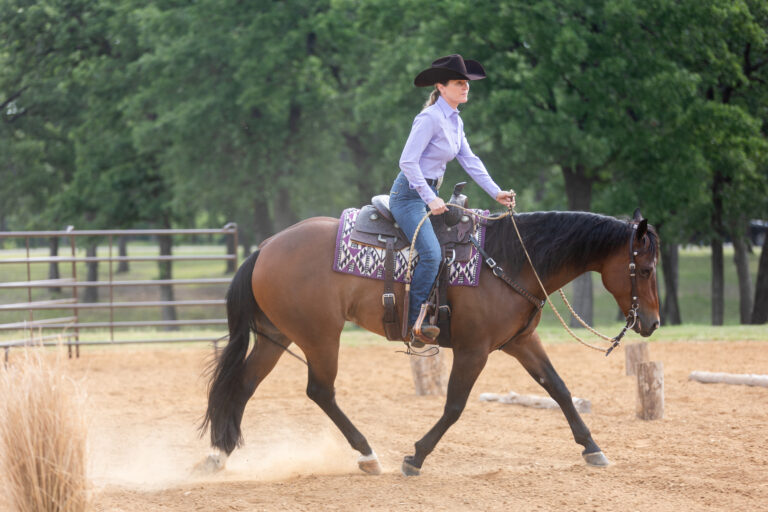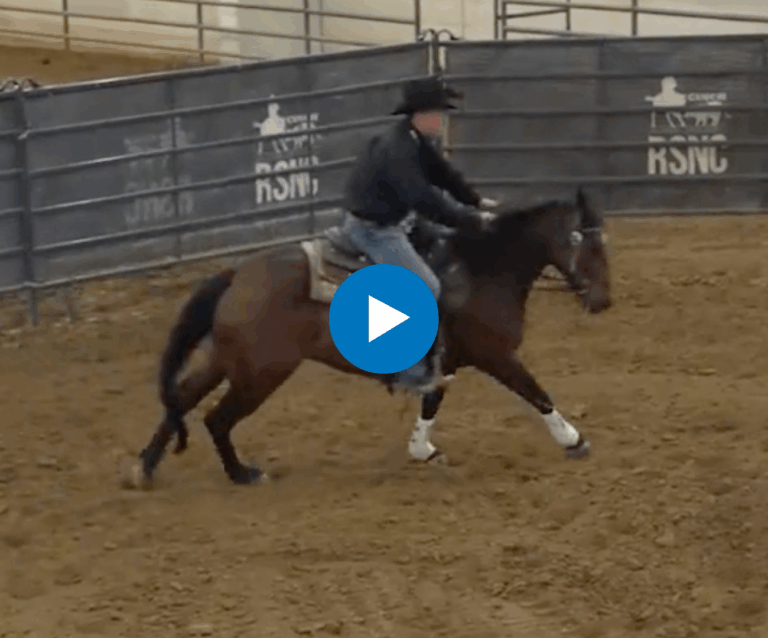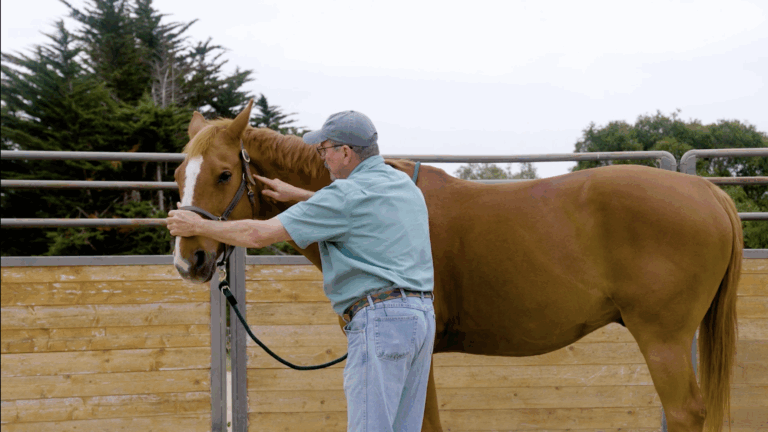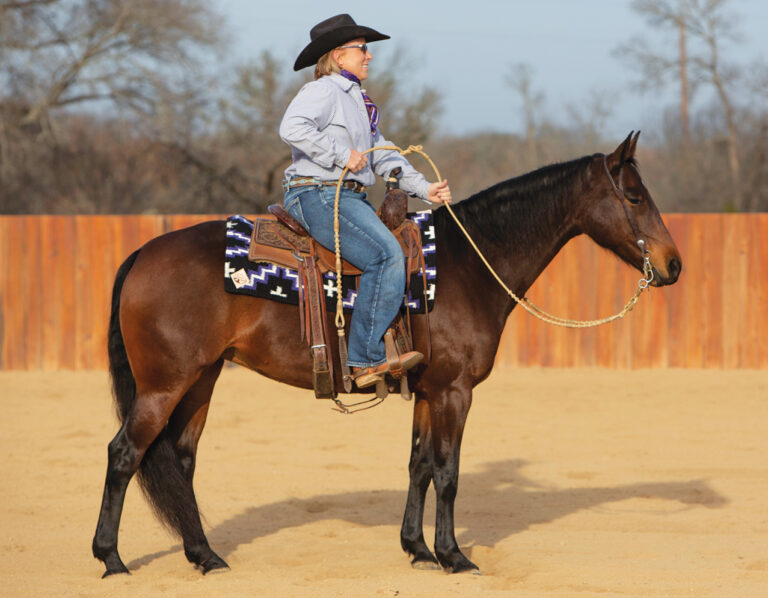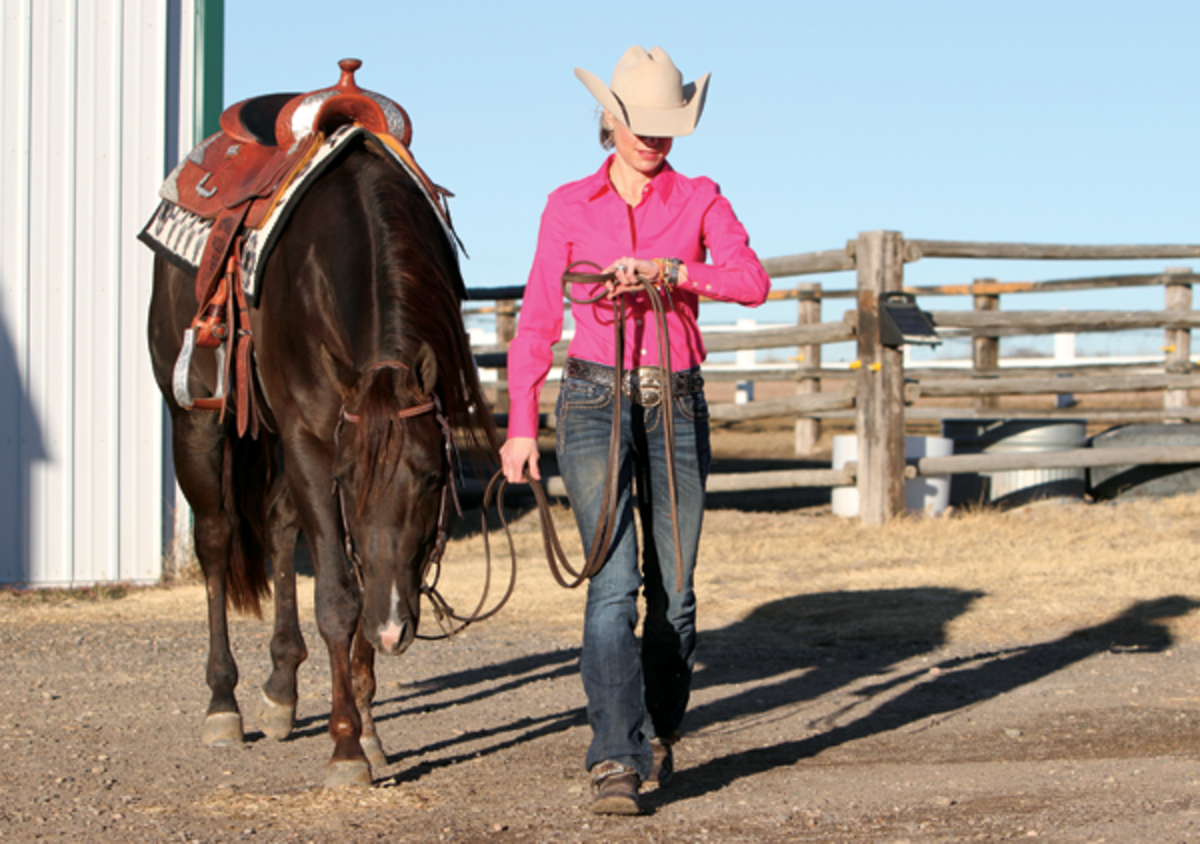
Every single minute you spend with your horse is meaningful; it can be positive or negative. You want to build plenty of positive experiences to help you and your horse work as a team to your fullest potential.
Even spending that few minutes petting your horse, giving him some attention that says, “You’re my friend, and I like you,” is a huge benefit. It will help build your bond.
Here, I’ll outline both groundwork and mounted exercises that will help you make the most of your time with your horse—no matter how much time that is.
Groundwork Longeing exercises: Use sending drills—point the horse in the direction you want him to go and send him out to longe on a circle—changes of direction, sidepasses, and rollbacks.
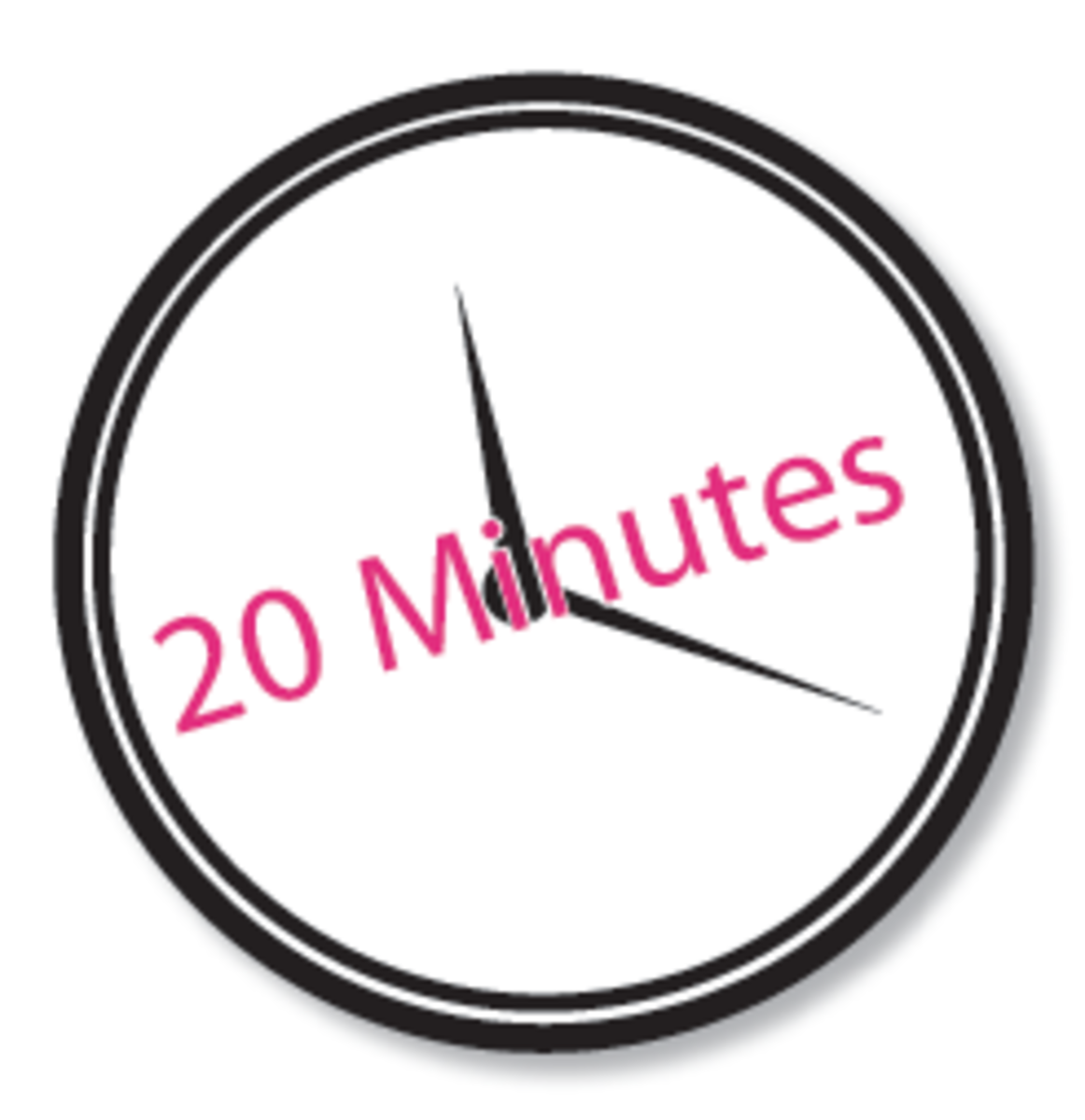
What to do: Start with sending drills. Ask your horse to move his feet in one direction, then ask him to stop, using vocal and/or body commands. Include multiple changes of direction—that way he has to focus on you.
To send your horse to the right, keep your body positioned back toward his hip. Have the longe line in your right hand and point out with that hand, then cluck or kiss—whatever your cue is—to get him to move. If he’s not moving at the speed you want, swing a longe whip at him once or twice until he moves out.
To change direction, pull his head toward you, take a step toward his front end, ask him to stop and drive back (rollback), then point him in the opposite direction.
To sidepass, start with his nose at the fence; you’ll inch him, little by little, front end then back end, down the fence. Tap his neck or shoulder with your finger or crop, asking him to move his front feet. Then tap at his hip a couple of times until he moves his back feet. Alternate back and forth until he moves both sets of feet.
Benefits: Your horse will connect with and pay attention to you. You’ll learn to direct his feet, and, as a bonus, he’ll get some cardio exercise. Also, sending drills are the first step in teaching a horse to go the direction you point him.
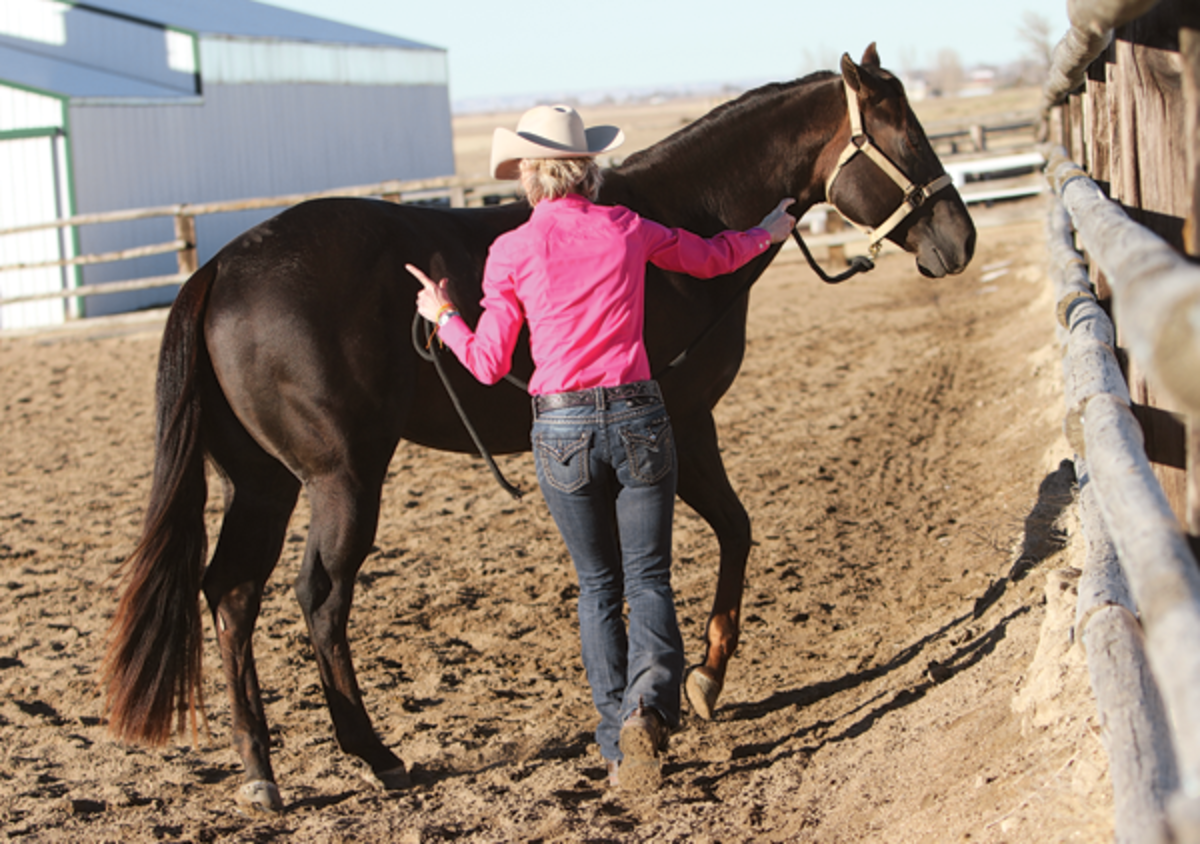
Showmanship-Type Exercises: Lead your horse at a walk/trot in circles, squares, or triangles; or around cones. Stop him, back him, set him up, or pivot him.
What to do: Carry a longe whip or small crop to have on hand if needed. Lead your horse and keep him next to you. Make sure he maintains his position—his throatlatch at your shoulder—at whatever speed you’re walking or jogging. If he’s obstinate, use the pressure-and-release system by pulling on the lead rope until he gives to it and moves his feet. As soon as he does move, release the pressure.
To serpentine around cones, your horse should be glued right next to you. If he makes a mistake and doesn’t follow, again use pressure and release.
To pivot, stand on the left side of your horse, facing him, and keep your shoulders square. Your left shoulder should be up by his nose, and your right shoulder will be approximately at his shoulder. Walk straight toward him and ask him to move away from your space—think of walking toward him with your chin moving straight toward his eye.
If he doesn’t move, use the longe whip or crop to tap in the direction of his neck or shoulder until he moves away.
Benefits: These exercises get your horse to pay attention to you, increase your communication, and teach him to give to pressure.
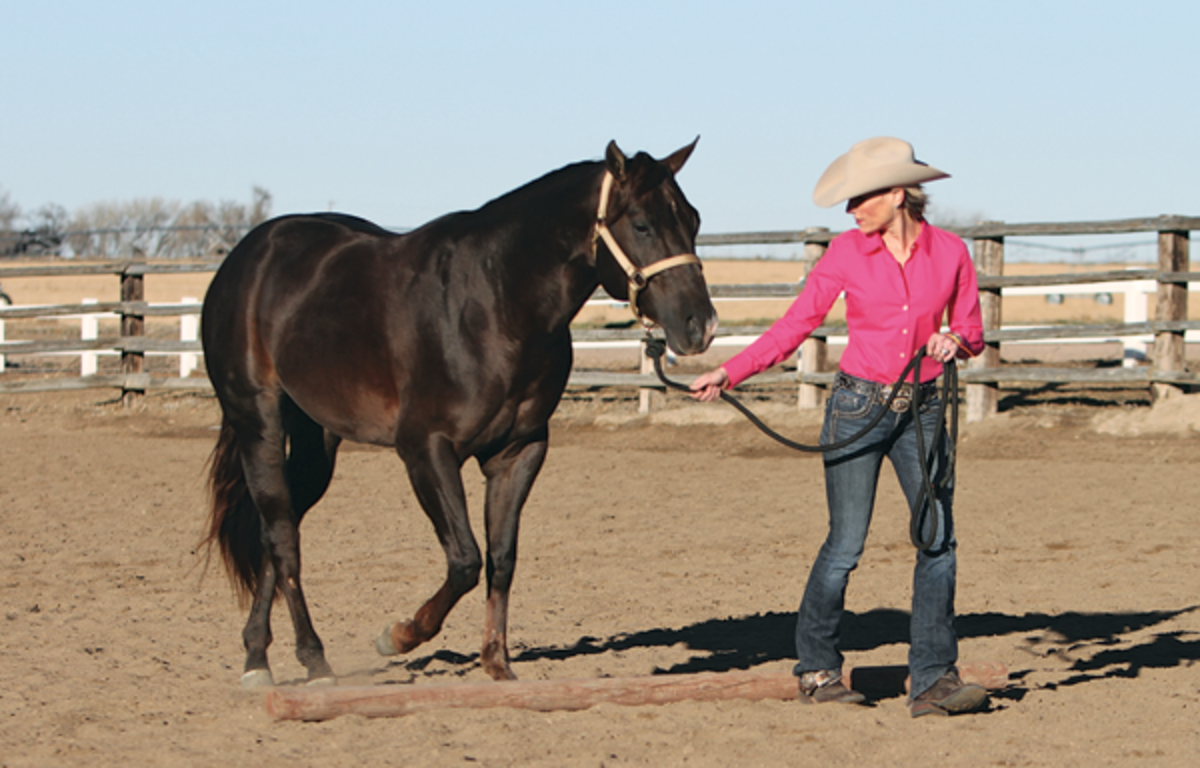
In-Hand Trail Course:Lay out cones, bridges, poles, or other objects you can work your horse around.
What to do: Set up obstacles, and work your horse through them. If you find a spot where he’s sticky, nervous, or simply doesn’t know what to do, spend time there.
For nervousness at any obstacle, work him around it until he’s comfortable, then eventually work him on it. End the session when he’s confident.
Benefits: In-hand obstacle work builds confidence and obedience.
Desensitizing:Use a saddle blanket, a plastic bag, a rope—anything you can swing around, make noise with, or drag.
Note: This exercise is for a horse that’s only slightly spooky about an object. If your horse is deeply afraid of one of these objects, wait until you can spend more time desensitizing him. You’ll start out holding the object far away from him and spend more time getting him accustomed to it. Once he gains confidence, try the exercise below.
What to do: If your horse is a little worried about an object—a plastic bag, let’s say—start by having him follow you while you hold the scary object in your free, left hand. When you’re walking away from your horse, he won’t feel threatened by that scary object—it’s leaving his space, and he’ll be more curious and may want to check it out. Following behind you allows him to build confidence. When he’s more confident, he’ll move closer to you.
At that stage, continue asking him to follow you and wave the object in front of you. If he feels comfortable in less than your 20 allotted minutes, face him while flapping the bag. Slowly get closer and closer until you reach that point where he’s comfortable with it touching him. End these exercises on a positive note, and don’t push your horse too quickly.
Benefits: He’ll build confidence, but it won’t require too much time.
Mounted Exercises
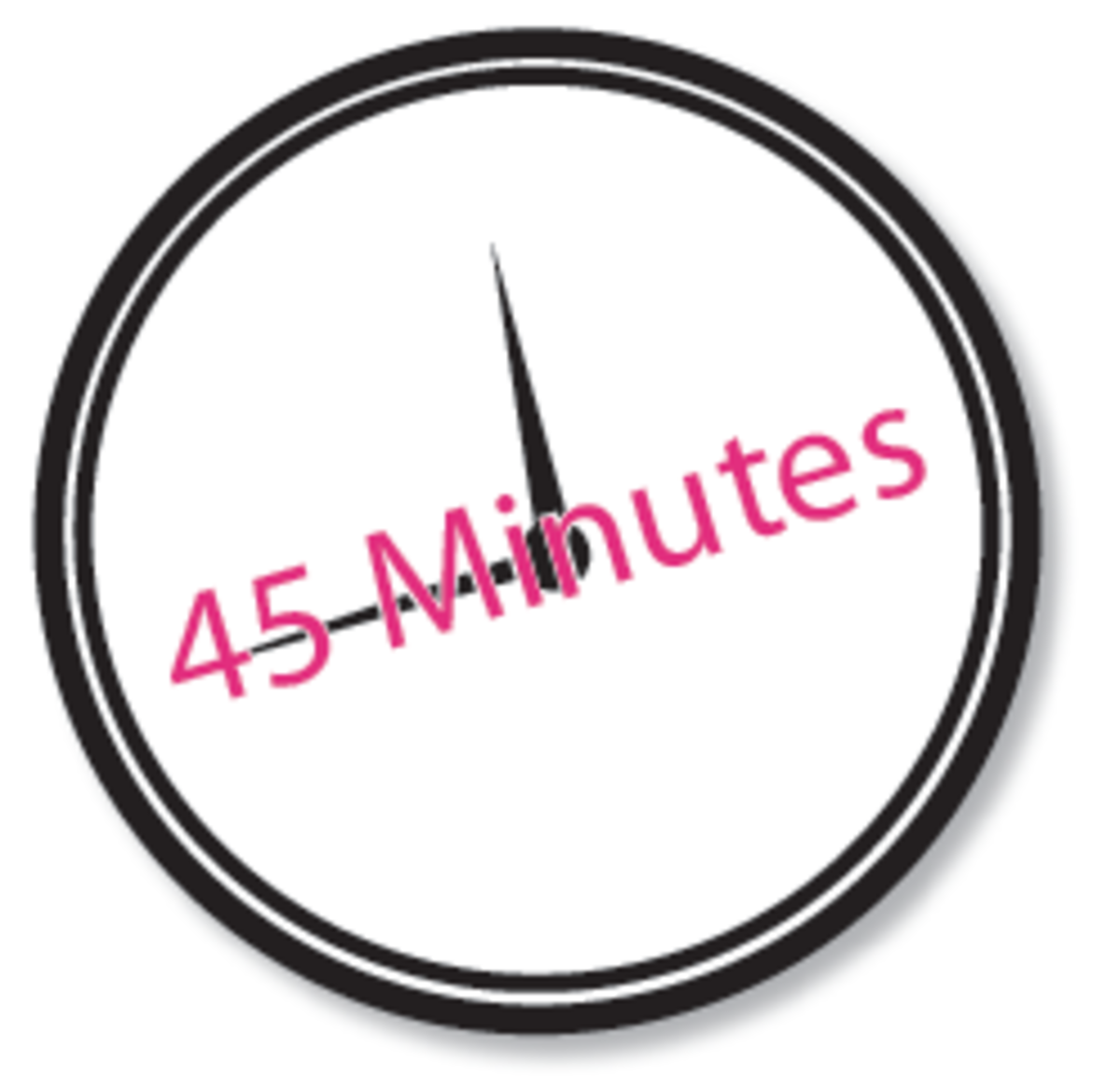
Note: Do these individually, or mix and match them to get just the right workout.
Stretching: Soften and supple your horse with flexing exercises.
What to do: Use your reins to get your horse to yield to the bridle. Start this exercise at a standstill. As you and your horse become comfortable, increase it to the walk. →
Slide one hand down the corresponding rein, and pull your horse’s head toward you—it should be at about a 90-degree angle to his body. Wait for him to give you the release—producing slack in the rein—and then let go. There should be no tension on the rein when you release it. Repeat on the other side, with the other rein.
Eventually, you can do these exercises at the trot and lope. Once the horse gets good at one gait, add more speed.
Benefits: You’ll help your horse stay in tune and focused on you. Plus, he’ll be more responsive to your cues.
Cardio: Alternating between the walk, trot, and lope.
What to Do: Spend about 5 minutes walking and suppling your horse with the stretching exercises on page 48. Then, spend 10 minutes trotting, 5 minutes walking, 10 minutes loping, and 5 minutes walking. Once that’s done, stretch and cool your horse out.
Benefits: This is fairly simple work that keeps your horse supple and fit. If he’s stalled all day, this allows him to “get the wiggles out”; he’ll be quieter and happier.
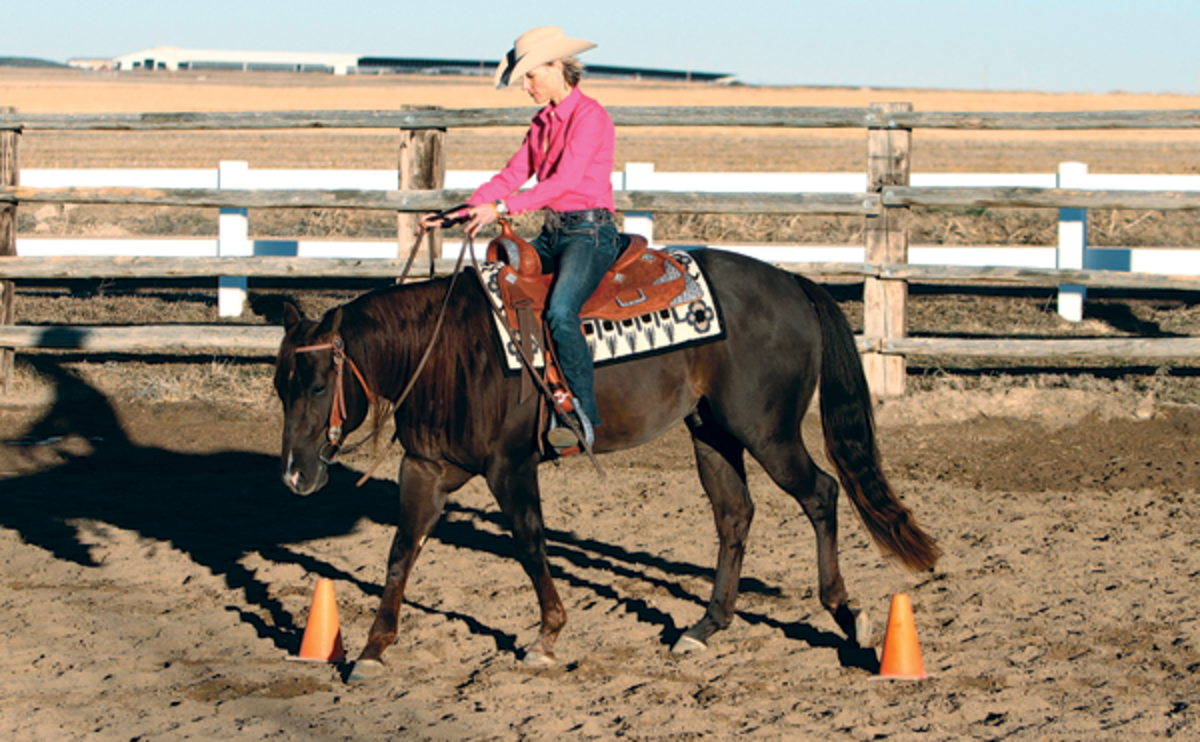
Transitions: Work on transitions between the walk, trot, and lope.
What to do: Spend a few minutes softening and suppling. Then, go through all the sequences and work on each transition.
Use cones to measure your horse’s progress. Pick out one cone where you ask for the transition. It might take him two horse lengths to do it; keep working until it takes one horse length. Eventually, it’ll only take him a few steps.
Benefits: He’ll become soft, supple, and in tune with your body cues.

Discipline-Specific: Pick a maneuver you or your horse need to work on for improvement.
What to do: Start with stretching and cardio. Then, move on to a maneuver that’s a challenge for you or for your horse.
If you’ve ever thought, I’d really like my horse to get better at X, spend 15 to 20 minutes focused on that one thing.
Benefits: Your horse will be more solid in his training and build confidence. Horses learn from repetition, so the more something’s repeated, the better and more solid it’ll become. It’ll also make you a more solid rider and build your muscle memory.
By spending time on one specific thing, you also create the opportunity to ask the same way each time. Your horse will realize the right answer quicker, and he’ll become sharper in his response. →
Short Non-Arena Ride: Take a break and enjoy some sunshine.
What to do: Get your horse out of the arena; take him on a nearby trail, walk him down the road, or ride in an open space.
Benefits: Your horse will realize he doesn’t have to work hard every time he sees you. He’ll be fresher in his mind and more willing to work.
If he’s timid and not used to trails, you can help him in two ways. Ride out with a friend who has a confident horse. Her horse will help yours build confidence. If that’s not an option, take him for a leisurely walk on a lead. Keep it calm, let him eat some grass, and enjoy the sunshine.
Groundwork, Warm Up, Ride: Pick a few exercises from the 20-minute and 45-minute time frames.
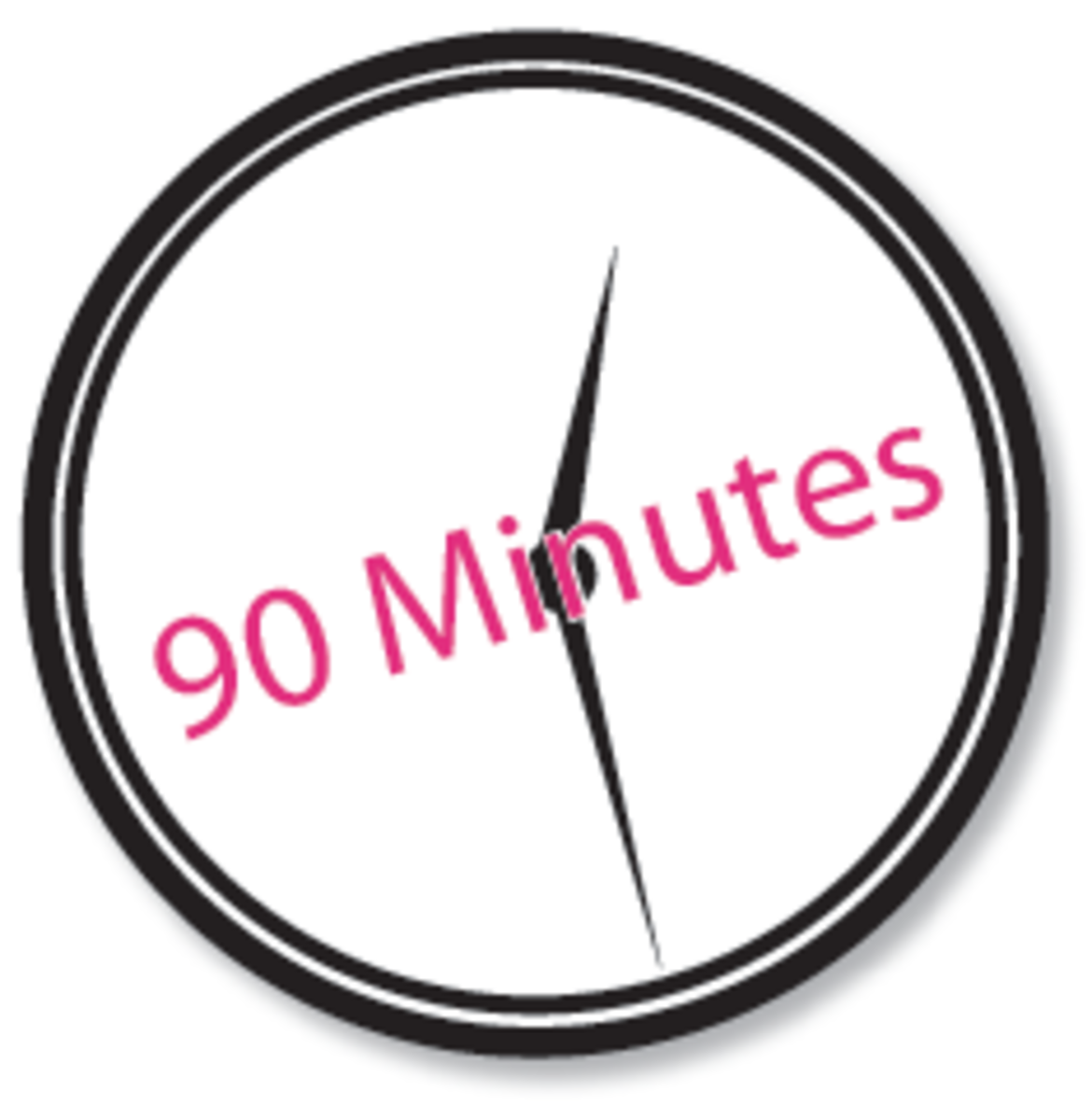
What to do: Start with groundwork to focus your horse on you and the task at hand. Begin your ride by suppling and softening him—that’s important every time you ride. Spend time on cardio, too—either longeing or intense training, such as loping or long trotting.
After your horse is warmed up, focus on specific items. You have more time, so work on multiple things. If you’re a pleasure rider, work on your transitions or cadence. Perfect the qualities you’ll need for the show pen.
If you compete in horsemanship classes, work on specific elements of a pattern. You’ll also work on your transitions, turns, and backing.
Do more intense training in your specific discipline. Instead of picking one thing to work on, choose four or five. At the end, spend time cooling your horse out.
Benefits: This type of ride gets your horse in the right mindset. It’s the best way to set him up for a long-lasting, successful outcome. If you end on a positive note, he’ll think about that when he’s put up for the day.
Long Trail Ride: Cover more ground than you do on shorter rides, and include natural obstacles.
What to do: Just extend out that trail ride. Take a longer route, and instead of simply going out and coming back, include work with a natural obstacle, such as a water crossing. If you like, dismount and allow your horse to graze in a meadow for a few minutes. Benefits: They’re the same as you’d get from a shorter trail ride, only more so.

Specific Problems: Focus on something your horse really struggles with. For example, a common problem for reiners is the horse getting too far back and losing forward motion in his spins.
What to do: Soften, supple, and warm-up your horse so he’s ready for the hard work. If you’re only focusing on spins, include some cardio. (If circles or speed transitions are your problem, those will provide plenty of cardio.)
Let’s say your horse is losing forward motion in his left-side spins. Walk him in a small circle to the left and keep making that circle tighter and tighter. Your horse’s body will be fairly straight, but he’ll have a small arc from his shoulders to his nose, allowing you to just see his left eye.
While you’re decreasing the size of your circle, start driving with your outside leg to bring his shoulders around until he eventually walks into that spin. Again, if he gets sticky or rocks back, push him forward again into that small circle. End the ride by cooling your horse out.
Benefits: Spending an hour working on one problem will prevent you from rushing through it and allow your horse to build confidence slowly. It’ll lower both of your anxiety levels.
Michelle Chapman, Eaton, Colorado, coaches amateur riders in reining and all-around events. She was the NAAC rookie pro champion at the 2013 National Reining Horse Association Futurity. She was also the 2013 rookie professional and limited open champion with the Rocky Mountain Reining Horse Association. Learn more at cphreiners.com.


